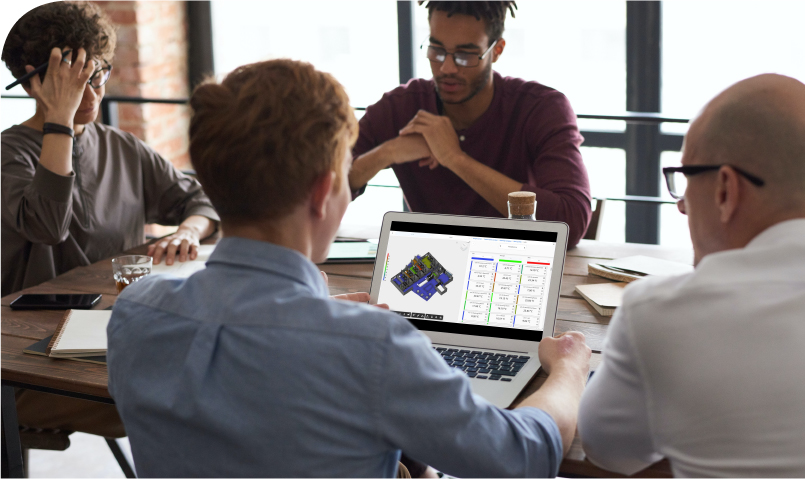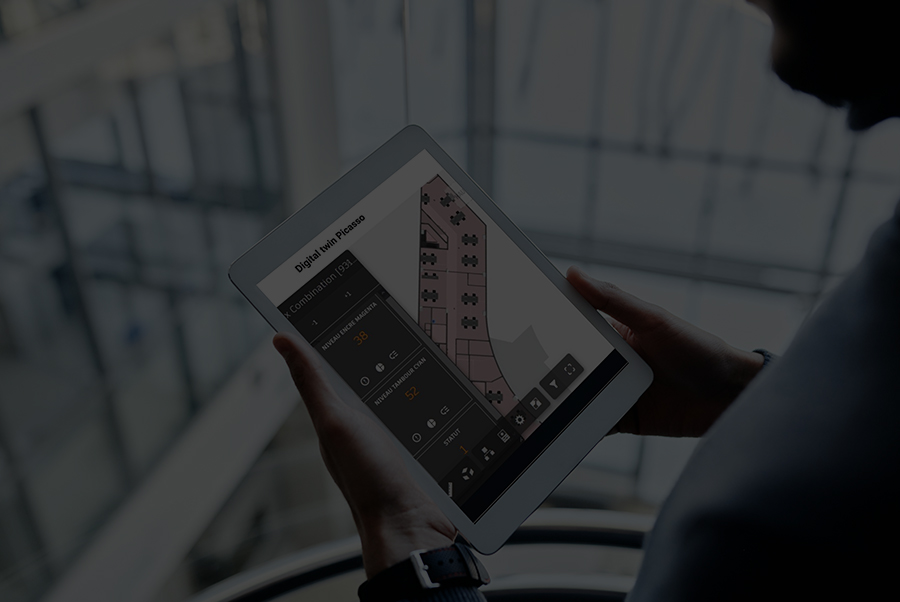
TRANSFORMING A BUILDING FROM THE 80s INTO A SMART BUILDING
The project finally selected in Nanterre included buildings that were mostly from the 1980s. “We first had to model all the buildings on the site and populate this model with all the completely heterogeneous systems that made them up,” explains Alain Despiau-Peyralade. “We had to start from scratch, with PDF plans transformed via Revit into 3D representations in record time. We then imagined the possible uses once the BOS was installed in the building, by analyzing the existing assets (desks, chairs, etc.) using the 3D viewer. The various digital systems were integrated in such a way as to be able to identify all the available spaces, with the associated equipment for each one, and to measure their occupation,” he continues.
THE BOS SpinalCore A smart building SCALABLE SOLUTION
Several employees were trained to use the SpinalCore graphical database, so that they could manage the building autonomously. They were all able to experience the value of a BIM-O&M digital twin in a building, whether it is modern or old. “We have measured the integration and reproduction power of this system, which is easy and quick to implement and thanks to which it is possible to link any database directly into the BOS graphic database. In the case of a relatively old building undergoing renovation, we can therefore start “small” but then develop the digital twin of the building and train the teams as we go along, avoiding too large of an investment at the outset.” Leveraging existing data by gradually integrating it into the BOS, makes it possible to implement new digital services without necessarily having to add additional IOT or IS. This significantly reduces the CAPEX budget for setting up a new IS and the OPEX budget for operating it.
THE SUCCESS OF EDF’S smart building PROJECT
“This project has been a real success. We were able to measure how easily the BOS can be adapted to increasingly complex uses, and the run allowed us to realize the gains made in the day-to-day operation of the system, with the amount of data increasing as the uses evolve and therefore real economies of scale. For the first time, thanks to the data from the systems, we were able to have a real representation of a building from the 1980s, which had never been modeled or inventoried. This project has sparked interest in other parts of the group, for whom the digital twin and its deployment have become a no-brainer because of how easy it is to replicate a system like SpinalCore in any type of building.”
“We’ve tested a lot of solutions that call themselves ‘BOS,’ but today the only service on the market that truly delivers on that promise, beyond simple IoT or digital management basics, is SpinalCom. Without the BOS, the smart building will not exist, but the BOS is not a simple digital model populated with data, it is a representation that relies on a scalable database from the BIM,” concludes Alain Despiau-Peyralade.



